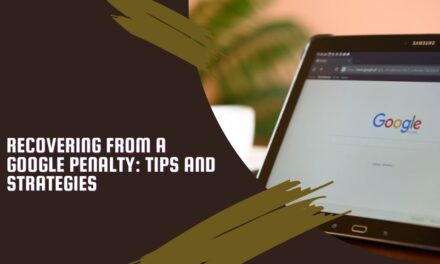Over the past 20 years, there have been significant changes in the digital world, but few have had as long-lasting an effect as Google’s mobile-first indexing initiative. This shift was both unavoidable and revolutionary in a time when mobile devices are the main means of internet access. Websites that had previously only used desktop optimisation were now dealing with additional difficulties. Simultaneously, those who prioritised mobile strategies benefited.
Mobile-first indexing changed the way websites are ranked and crawled, and its effects can still be felt today. For business owners, marketers, and SEO professionals, understanding this update is not optional. It is essential. With billions of searches happening on smartphones every day, Google had to align its systems with the evolving behavior of its users.
What Is Mobile-First Indexing?
At its core, mobile-first indexing means that Google uses the mobile version of a website’s content for indexing and ranking. This is a shift from the earlier system, where the desktop version was the primary source.
How It Works
When Googlebot crawls your site, it now prioritizes the mobile version. If your mobile site has less content, fewer links, or a different structure than your desktop version, that mobile version is what Google will evaluate. This shift began rolling out in 2016 and was fully implemented by 2021.
Why the Change Happened
The change was driven by user behavior. A growing majority of web traffic now comes from mobile devices. To match this trend, Google wanted to ensure that the content ranked in its search engine reflects what users see on their mobile screens.
Key Differences from Traditional Indexing
Mobile-first indexing forces developers and SEO teams to reconsider everything from responsive layouts to how they serve content across devices, in contrast to earlier indexing techniques that prioritised desktop design.

The Broader Impact on Search Rankings
With this update, Google placed a new emphasis on the mobile user experience. Websites that neglected mobile optimization began to lose traction. Others gained visibility by aligning their design and content with mobile behavior.
Mobile Search Becomes the Benchmark
The mobile search impact is evident in how Google treats mobile usability as a core ranking signal. This includes page load speed, tap-target size, responsive design, and mobile readability. A poorly optimized mobile site can now hurt your visibility across all devices.
Content Consistency Is Critical
Your mobile and desktop versions must deliver consistent content. If elements are hidden or removed for mobile, Google may not index them, which affects your rankings. Businesses must aim for parity between platforms.
Shift in Keyword Strategy
With mobile search comes a change in how people phrase queries. Voice search, local intent, and shorter queries are more common. Adapting to these trends ensures your content aligns with real-world mobile behavior.
The Role of Google SEO Update in Mobile Strategy
As part of a larger Google SEO update strategy to improve search experiences, mobile-first indexing was implemented. These changes take into account how the web is changing and how crucial it is to match user intent.
Page Experience Update
This update includes signals like Core Web Vitals, which measure loading speed, interactivity, and visual stability. These metrics are crucial for mobile performance and directly influence rankings.
BERT and MUM Algorithms
Google’s natural language processing models, like BERT and MUM, rely heavily on contextual understanding. Since many mobile users use conversational queries, these updates work closely with mobile-first indexing to deliver relevant results.
Structured Data and Mobile Navigation
Proper use of structured data and logical mobile navigation helps Google understand your content better. It also enhances your appearance in mobile SERPs through rich snippets and featured results.
Why Businesses Can’t Ignore Mobile Optimization
Adapting to mobile-first indexing is no longer a technical upgrade. It is a business necessity. The way people interact with brands online is deeply influenced by mobile experience. Whether they are searching for a product, reading a blog, or contacting a service provider, mobile is often the first touchpoint.
Brand Visibility Depends on Mobile UX
Conversions, user engagement, and trust are all increased by a flawless mobile experience. Slow or clumsy mobile websites drive away potential clients. To stay competitive, businesses need to give mobile-first design principles top priority.
Local and On-the-Go Intent
Mobile users often have local intent. This has changed how businesses manage their online presence, from Google Business Profiles to local SEO strategies. Your ability to appear in local mobile searches hinges on mobile-optimized content.
Competitive Advantage
Brands that optimized early saw improvements in rankings, engagement, and ROI. Those that delayed are now catching up. Investing in mobile usability and performance is a sustainable advantage in the long term.
How to Optimize for Mobile-First Indexing
Now that mobile-first indexing is fully in place, businesses need clear strategies to align with it. Optimization is not just about shrinking your desktop site. It is about creating a thoughtful, user-first mobile experience.
Prioritize Responsive Design
Responsive design ensures that your website adjusts to all screen sizes. It avoids the pitfalls of having separate desktop and mobile versions, which can lead to content mismatches.
Improve Mobile Load Times
Speed is a critical ranking factor. Compress images, use minimal JavaScript, and leverage caching to enhance mobile performance. Faster load times reduce bounce rates and increase engagement.
Mobile-Friendly Navigation
On small screens, interactive elements, buttons, and menus should be simple to use. Make sure users can locate information with ease and finish tasks without becoming frustrated.
Test Your Site Frequently
Use tools like Google’s Mobile-Friendly Test and PageSpeed Insights to check your mobile readiness. These tools highlight areas for improvement and ensure compliance with current standards.
Measuring the Mobile Search Impact
To understand how mobile search impact affects your website, you need to monitor mobile-specific performance metrics. These insights help refine your strategy and prove the ROI of mobile SEO.
Mobile Traffic in Analytics
Track how much of your traffic comes from mobile users. Segment your data to analyze behavior, bounce rate, and conversions specific to mobile devices.
Search Console Insights
Google Search Console shows mobile usability issues, indexing status, and performance across search queries. Use this data to detect problems and track improvement over time.
Heatmaps and User Behavior Tools
Click-tracking tools, heatmaps, and session recordings show how users interact with your website on mobile devices. Design and UX choices are guided by these insights.
Common Mistakes to Avoid
While optimizing for mobile-first indexing, it is important to avoid errors that can harm your rankings or degrade the user experience.
Serving Less Content on Mobile
Some websites remove or hide important elements for mobile. This can lead to incomplete indexing. Always serve the same valuable content across devices.
Using Interstitials Poorly
Pop-ups and overlays that block content can frustrate users and negatively impact rankings. Use them sparingly and make sure they are easy to close.
Ignoring Structured Data on Mobile
Ensure that structured data is implemented correctly across all versions of your site. Missing markup can limit how your pages appear in search results.

Preparing for the Future of Mobile Search
Mobile-first indexing was just the beginning. The future of search will continue to evolve around mobile behavior. Staying ahead requires both strategic foresight and agile implementation.
AI and Mobile Search Personalization
In order to provide more individualised mobile results, Google is incorporating AI. These consist of location-based recommendations that align with current requirements, personalised snippets, and predictive queries.
Voice and Visual Search Trends
Mobile users increasingly use voice commands and image-based queries. Optimizing for these formats opens new channels of visibility and user interaction.
Continuous Optimization Culture
Mobile optimization is not a one-time task. As devices, algorithms, and user expectations change, your SEO strategy must remain flexible and ongoing.
Conclusion: Embrace the Mobile Revolution
A turning point in the development of SEO was the implementation of mobile-first indexing. It acknowledged a fundamental change in the way people engage with digital content and obtain information. A new era of search relevance and usability was brought about by Google by adjusting search ranking algorithms to mobile behaviour. The Google SEO update pertaining to mobile-first indexing serves as a reminder to businesses to put accessibility, speed, and user experience first.
The impact of mobile search is no longer hypothetical. It is quantifiable, genuine, and necessary for sustained success. In the search ecosystem, those who adjust to this mobile-centric reality will not only remain but flourish. Adopting mobile-first strategies is the most reliable way to increase visibility, engagement, and growth in the digital landscape, regardless of your company’s size.












